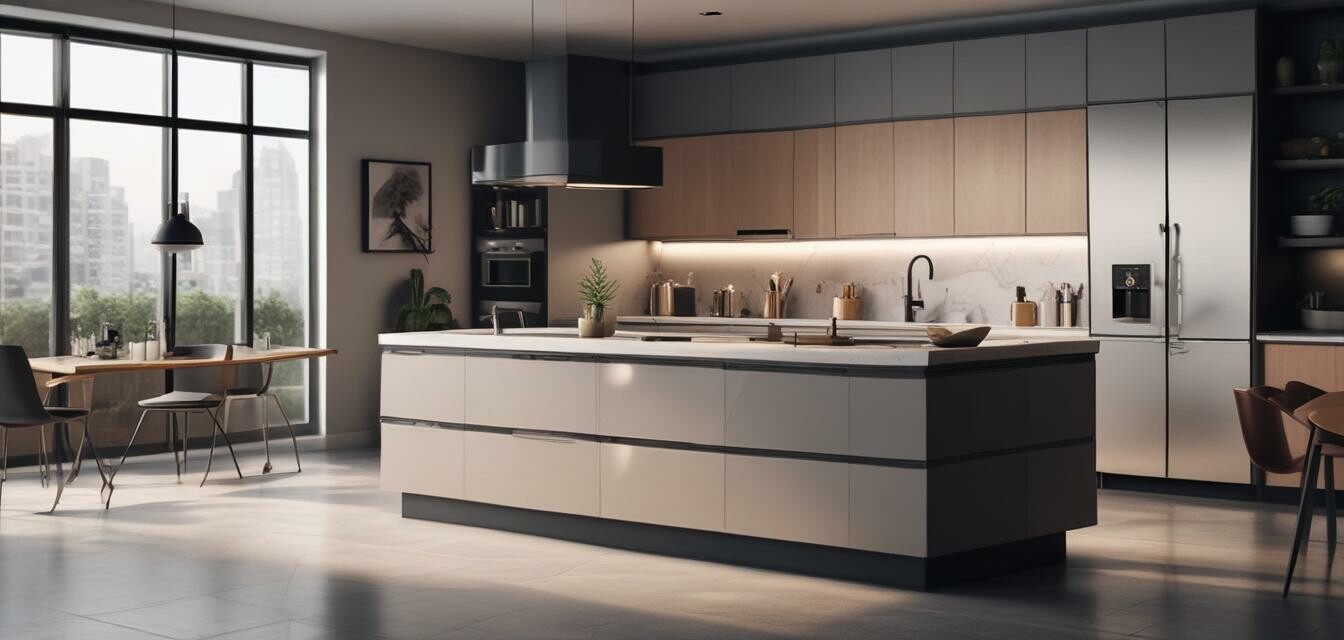
The Impact of IoT on Modern Kitchen Design
Key Takeaways
- The Internet of Things (IoT) is reshaping kitchen design through automation and connectivity.
- Smart appliances provide enhanced functionality, efficiency, and user experience.
- Kitchen layouts are evolving to integrate technology seamlessly.
- IoT promotes sustainability through optimized energy consumption.
- User interactions with kitchens have become more intuitive and enjoyable.
The Internet of Things (IoT) is a game-changer in various industries, and the kitchen is no exception. As technology advances, kitchens are becoming more than just cooking spaces; they are evolving into smart, interactive environments. In this article, we'll explore how IoT is influencing modern kitchen design and user interaction, creating a more efficient and enjoyable cooking experience.
The Rise of Smart Kitchens
The trend of creating smart kitchens is on the rise, and it is primarily driven by the adoption of IoT technology. Smart appliances can communicate with each other and with users, leading to improved functionality and efficiency. As homeowners seek convenience and control, new designs are emerging that prioritize these technological advances.
Components of Smart Kitchens
Smart kitchens are composed of various components that interact using IoT technology. Below is a breakdown of these components:
| Component | Description | Examples |
|---|---|---|
| Smart Ovens | Ovens that can be controlled remotely for preheating, cooking, and monitoring. | Wi-Fi enabled convection ovens |
| Intelligent Cooktops | Cooktops with integrated sensors that adjust heating based on cookware. | Induction cooktops with smart heat control |
| IoT Refrigerators | Refrigerators that provide inventory management and expiration tracking. | Smart fridges with touch screens |
| Touchless Faucets | Faucets that can be activated with motion sensors, reducing water usage. | Sensor-activated kitchen faucets |
| Smart Lighting | Lighting systems that can be controlled via smartphones and adjust based on activity. | Wi-Fi enabled LED bulbs |
Designing for Connectivity
Modern kitchen designs are now incorporating spaces that enhance connectivity between devices. These designs create a seamless integration of technology into the kitchen environment. Some of the key design elements include:
- Open Concept Layouts: Allow for better communication between living spaces and kitchens.
- Central Control Panels: A designated space for controlling various smart kitchen appliances.
- Hidden Wiring: A cleaner look by concealing electrical connections associated with smart devices.
- Accessible Outlets: Strategically placed outlets for easy access to power devices.
Enhancing User Interaction
The user experience in kitchens is greatly enhanced through IoT technology. Key aspects include:
| Feature | Traditional Kitchen | Smart Kitchen |
|---|---|---|
| Control | Manual operation of appliances | Remote control and automation |
| Information Access | Limited to physical cookbooks | Interactive recipes and cooking tips |
| Energy Efficiency | Less optimized energy usage | Automated energy-saving features |
| Maintenance | Periodic manual checks | Real-time notifications for maintenance |
Sustainability and Efficiency
With the growing concerns about eco-friendliness, IoT technology is paving the way for more sustainable kitchen designs. Smart appliances can optimize power consumption, track usage, and even suggest eco-friendly cooking methods.
- Using energy-efficient appliances to reduce overall energy consumption.
- Implementing smart water management systems to conserve water usage.
- Tracking food inventory to minimize waste and improve meal planning.
Future Trends in Kitchen Design
As IoT technology continues to evolve, the future of kitchen design looks bright. Here are some trends we might see in the coming years:
- Personalized Experiences: Kitchens responding to individual preferences and habits.
- Further Integration: Seamless integration of more home devices into kitchen networks.
- Focus on Health: Kitchens designed for healthier cooking habits and nutrition tracking.
- Advanced Automation: Predictive technology that anticipates user needs and automates tasks.
For those looking to upgrade their kitchen, exploring the latest innovations in Bluetooth-enabled appliances, smart ovens, and intelligent cooktops can enhance both the aesthetic and functionality of their cooking spaces.
Conclusion
The Internet of Things is revolutionizing modern kitchen design, creating spaces that are not only functional but also intuitive and efficient. As technology continues to advance, homeowners can expect more innovations that will further enhance the cooking experience. Staying updated with the latest trends in kitchen technology news will ensure you are well-informed and able to make the best choices for your space.